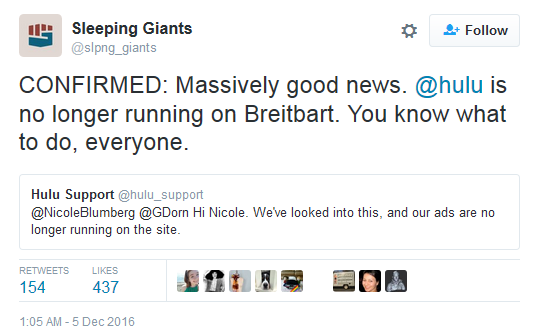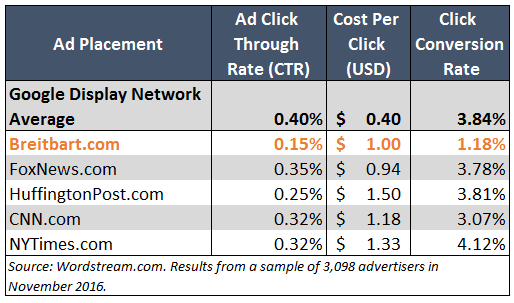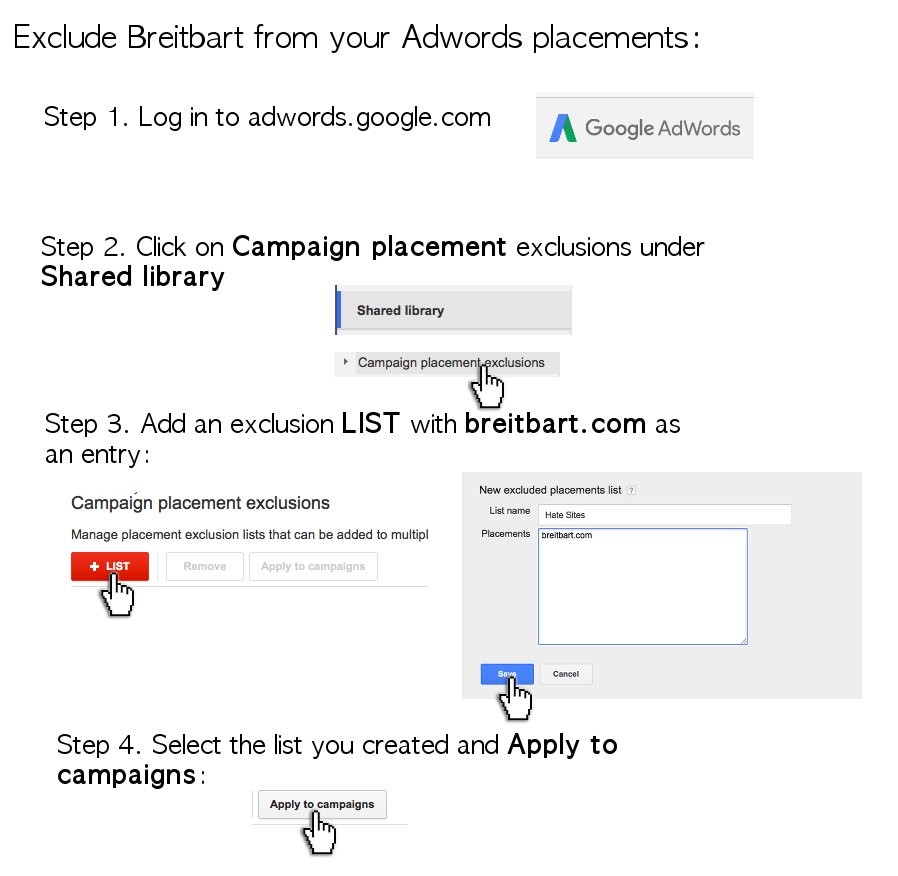Google offers advertisers several different ways to target their ads on the Google Display Network to reach its vast audience. With over 2 trillion impressions served each month across over 2 million unique websites, most GDN advertisers don’t manually select each placement where their ads serve. Instead, many advertisers on GDN chose to target their ads to reach audiences of past website visitors through remarketing, serve ads on the websites with certain keywords, or use another programmatic method of buying their display placement, allowing Google to place their ads on thousands of sites for them.
This is typically not a problem, as most of the Google Display network includes sites that are either unremarkable or unobjectionable. However, the Google Display Network does include the controversial Breitbart.com, which hosts content many view as racist, sexist, anti-Semitic, Islamophobic, homophobic, violent, or otherwise offensive.

Recently, some large advertisers such as Kellogg’s announced they would no longer advertise on Breitbart.com, citing that the site’s content conflicted with their brand image. Many smaller advertisers are seeing their ads on Breitbart and following suit, and those who oppose Breitbart’s message are calling on other advertisers to do the same. In addition, ad tech provider AppNexus has barred the site from using its technology.
Do Ads on Breitbart Even Work?
Although brand damage is a genuine fear for all advertisers, there may be more reason for advertisers to drop their ads on Breitbart than just their corporate values. As it turns out, Breitbart ads don’t work and may be a huge waste of money!
In reviewing data from November 2016, WordStream managed a total of 3,098 accounts whose ads had appeared on Breitbart. Nearly all those advertisers didn’t necessarily intend to advertise on the domain; only 7 accounts of those 3,098 had targeted the domain as a managed placement in their campaigns. During November, these accounts displayed over 3 million impressions on the site and their overall ad performance on the domain was awful! Ads on Breitbart.com have surprisingly low click-through rates, poor conversion rates, and cost far too much per click, compared to its peers on the Google Display Network.

The self-proclaimed news network finds its ads underperform its peers in the online news space as well. While popular news sites often have higher cost-per-clicks than the average site on GDN, they typically also reach a larger, more engaged audience. Ads on Breitbart.com may cost as much as they do on FoxNews.com or NYTimes.com, but the reach of Breitbart.com is a fraction of that of its peers. Google AdWords’ Display Planner estimates that Breitbart.com displays a total of 150-200M impressions a week, which is less than half of the estimated reach of FoxNews.com (400M-500M weekly ad impressions) and a quarter the estimated reach of NYTimes.com (500M-1B weekly impressions).
More importantly though, Breitbart’s expensive audience is appreciably less likely to click or convert after seeing an ad. Unfortunately, lower click-through rates on the Google Display Network translate to lower display quality scores, which can ruin the rest of your campaign’s efforts as well!
How to Exclude a Specific Site on the GDN
When managing a display campaign within AdWords, it’s a best practice to routinely exclude poorly performing placements to prevent you from wasting budget on that site. Given Breitbart’s relatively poor ad performance and all the controversy the site surrounds itself in, here’s how you can exclude it from your display campaigns so that your ads won’t appear on the site:

Image via Ben Harnett
One of the benefits to advertising with Google is that you have a lot of control over where and how your ads appear across the web. If you’d rather your ads not appear alongside content on Breitbart.com or any other site for any reason, you can add that site as an exclusion to your AdWords campaigns.
Data Sources
Data is based on a sample size of 3,098 accounts (WordStream clients) in all verticals advertising on the Google Display Network in November 2016.
Digital & Social Articles on Business 2 Community(16)
Report Post






